Aligarh Movement: Struggle for Women’s Education and establishment of Women’s College
By Afzal Usmani
After establishing the MAO College at Aligarh, Sir Syed Ahmad Khan and his associates in Aligarh Movement started to realize the need for women’s education. In 1896, the annual executive session of Muslim Educational Conference was held in Aligarh and a proposal to start a women education section in Muslim Educational Conference was accepted and Justice Karamat Hussain was appointed as its Founding Secretary. Nawab Mohsinul Mulk, Sahabzada Aftab Ahmad Khan, Janab Sultan Ahmad and Haji Ismail Khan were asked to assist Justice Karamat Hussain.
 In the annual session of Muslim Educational Conference of 1898 in Lahore, a separate department of women’s education was established and Sahabzada Aftab Ahmad Khan was elected its Secretary. This started a wrath from the conservative Muslims but a dedicated team of Janab Ummid Ali, Ghulam-us-Saqlain and Haji Ismail Khan wrote several letters and article in Aligarh Institute Gazette and other reputed journals to defend the decision of Muslim Educational Conference to start a women’s educational movement. Justice Amir Ali presided over the annual session of MEC in 1899 at Calcutta and the idea to start girl’s schools is all of the state capital was accepted. It was also agreed that the Ulema will be consulted to develop the curriculum of the schools and the modern subjects of Science and Social Science will also be included the syllabus. In the session of December 1902 in Delhi under the leadership of H.H. Sir Agha Khan, young Shaikh Abdullah was appointed as Secretary to look into the women’s educational project and was asked to start the activities very aggressively.
In the annual session of Muslim Educational Conference of 1898 in Lahore, a separate department of women’s education was established and Sahabzada Aftab Ahmad Khan was elected its Secretary. This started a wrath from the conservative Muslims but a dedicated team of Janab Ummid Ali, Ghulam-us-Saqlain and Haji Ismail Khan wrote several letters and article in Aligarh Institute Gazette and other reputed journals to defend the decision of Muslim Educational Conference to start a women’s educational movement. Justice Amir Ali presided over the annual session of MEC in 1899 at Calcutta and the idea to start girl’s schools is all of the state capital was accepted. It was also agreed that the Ulema will be consulted to develop the curriculum of the schools and the modern subjects of Science and Social Science will also be included the syllabus. In the session of December 1902 in Delhi under the leadership of H.H. Sir Agha Khan, young Shaikh Abdullah was appointed as Secretary to look into the women’s educational project and was asked to start the activities very aggressively.
Shaikh Abdullah’s leadership shaped the women’s educational movement and played a very important role for the future of women’s education in India. Young Shaikh Abdullah and his team started writing articles in favor of women’s education in different journals. A special issue of “Aligarh Monthly” in November 1903 was published on women, entitled “Hum aur hamari khawateen”. Articles related to women’s education and their problems were written by, Syed Ghulam Neerang, Syed Sajjad Haider Yaldaram, Maulana Abul Kalam Azad and Maulvi Muhammad Akhtar. To further promote the cause of women’s education, in 1904, Shaikh Abdullah published a journal “Khatoon” from Aligarh which enabled the foundation of “Female Education Association”. The journal was continuously published till 1914 and the articles of Nawab Mohsinul Mulk, Mualvi Zakaullah Khan, Justice Karamat Hussain, Shaikh Abdul Qadir, Syed Ahmad Dehlavi, Maulana Aslam Jairajpuri, Muhammadi begum, Nazar Sajjad, Nafees Dulhan (wife of Maulana Habibur Rahman Khan Sherwani), Z.K.S. (daughter of Nawab Muzammilullah Khan) and Sughra Humayun Mirza were regularly published to this journals. In the annual session of 1905 at Aligarh, Begum Zahra Faizi (Murood-Janjeerah Bombay) lead the women education section and with the help of President of the session, Khalifa Muhhamad Hussain, Minister, State of Patialah, a resolution to start girls school under the Islamic tradition of ‘purdah’ and with modern science and sports activities were approved. This was the idea of Shaikh Abdullah which he had spread among the supporters of women’s education.

Founders Shaikh Abdullah alias Papa Mian and Begum Waheed Jahan alias Aala Bi
Shaikh Abdullah led a delegation to Lt. Governor of United Province and also wrote a proposal to promote women’s education to Begum Sultan Jahan, ruler of Bhopal. Begum Sultan Jahan accepted the proposal and One Hundred Rupees per month grant was allocated to Shaikh Abdullah for women’s education. He faced a strong and stiff resistance from the community, but his commitment paid and finally he managed to start a girl’s school with 5 students and one teacher at a rented facility in Aligarh town on 19th October, 1906. His wife Begum Waheed Jahan, alias ‘Aala Bi’ provided him the strongest support. After 3 years, school received more support and popularity so they moved to a bigger rented facility in the area of ‘Bani Israilan’ of Aligarh town.

The building where the school was started in 1906
In 1908, Shaikh Abdullah bought Fourteen Beegha (14 Beegha) of land which was known as “Rai Bag” at that time. Shaikh Abdullah wrote to United Province state government for help the state government allocated Seventeen Thousand Rupees (17000/-Rs) for building of the school and a regular grant of two hundred fifty (250/- Rupees) were allocated for Girls School. On 7th November, 1911, foundation stone for the school building was laid down by H.H. Lady Porter, wife of Lt. Governor of United Province. A building for hostel was also constructed, which was named as “Waheedia Hostel”. The school and hostel buildings were inaugurated on 1st march, 1914 by H.H. Begum Sultan Jahan, ruler of Bhopal. In 1916, foundation stone of another hostel, “Sultania Hostel” was laid down by Begum Sultan Jahan, the ruler of Bhopal. In 1917, for the first time, the girls of this school appeared in Middle School Examination and one of the students, Hanifa Begum secured First Position and a scholarship was awarded to her. In 1919, the first batch of this school appeared in Matriculation examination of UP Board and all of them were successful. Begum Sultan Jahan, the founding Chancellor of newly formed Aligarh Muslim University was Chief Guest in the annual function of 1922 and emphasized the need of women’s education and requested AMU authorities to adopt this school as the role model of women’s education.

In 1929, the school became Intermediate College and in 1930, during the Vice-Chancellorship of Sir Ross Masood, Dr. Ziauddin Ahmad made a recommendation and girl’s college became women’s college under the affiliation of Aligarh Muslim University and till date is an integral part of Aligarh Muslim University. In 1932, Begum Khatun Jahan, daughter of Shaikh Abdullah, who had just returned from England after completing her M.A. in Education from Ladies University, was appointed as Principal of Women’s College. In 1935, graduation course of B.A. was introduced in the college. UP Government helped to establish new hostels and Science laboratories. In 1937, Shaikh Abdullah’s another daughter Mumtaz Jahan was appointed as Principal and she served for more than 30 years as Principal of women’s college.
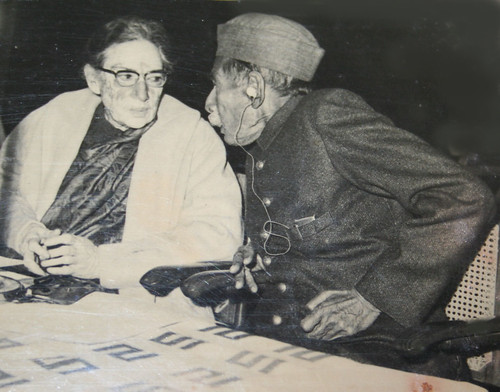
Mumtaz Jahan Haider, Principal 1938 – 70 with Nawab Chattari, Chancellor AMU Aligarh
Maulana Abul Kalam Azad visited Aligarh in 1949 to address the annual Convocation. He paid a visit to women’s college was very much impressed by the progress of women’s college and announced an annual grant of Nine hundred thousand rupees (Rs. 900,000/-) and assured to get a regular due share from all the grants which the government of India will make to Aligarh Muslim University.
Women’s College provides extensive instructional and residential facilities for girl students. A Career Planning Centre has also been established for counseling and career planning of women students with University Grant Commission’s assistance. Women’s Polytechnic is running several diploma level courses in Electronics and Computer Engineering, Information Technology, Costume Designing, Secretarial Practices etc. These courses are a part of vocationalisation scheme. The University has a Grievance Redressal Cell for matters exclusively relating to the women, part from General Grievance Cell for looking into the complaints of staff and the students. It has a Coaching and Guidance Centre for training and grooming of students, especially for the weaker sections of the society, and for preparing them for various All India Services. Women’s College provides undergraduate teaching to women students in the faculty of Arts, Social Science, Science, Life Science, and Commerce.
The college has recently started a post graduate course in Home Science. An Institution with international standard of undergraduate teaching, students of women’s college are always front runner. Every year a number of girls are selected in M.B.A., M.C.A., MIBM, MBBS, B.Tech. and other competitive tests of AMU and other institutes of India.
The women’s college campus includes an academic complex of class rooms and seminar rooms, an auditorium, a well equipped library, administrative buildings, and several residential hostels for about 1500 students. A career planning centre for women has been established in the college premises. A wide range of opportunities are available to College students for co-curricular and extra curricular activities. A large number of clubs and societies are run by the students. There are facilities for cultural events, N.C.C., Yoga, Teakwood, Volley Ball, Table Tennis and Basket Ball.At present a total of around 2699 students are enrolled in women’s college. There are around 95 faculty members in the college. The following subjects are taught in women’s college campus: English, Urdu,. Hindi, Sanskrit, Arabic, Linguistics, Fine Art (Faculty of Arts), History, Economics, Education, Political Science, Islamic Studies. Sociology (Faculty of Social Sciences), Botany, Zoology, Biochemistry, (Faculty of Life Sciences), Chemistry, Physics, Mathematics, Statistics, Geology, Geography (Faculty of Science), Home Science (Faculty of Agriculture), Theology (Faculty of Theology) and Physical Education. Prof. Bilquis N. Waris is the Principal of the college since 2008.
The following people have served as Women’s College Principals; Mrs. Mumtaz Jahan Haider Mrs. Khatoon Jahan(1931-38), (1938-70), Dr. Razia Khan (1970-83), Prof. Miss A. Thomas (1983-87), Prof. Zakia A. Siddiqi (1987-96), Prof. Shan Mohammad (Actg-1996-97), Prof Shaista Bano (Actg-1997-2000), Prof. Amina Kishore (2000-07) and Prof. Arunima Lal (Actg -2007-08).
From the very beginning, the women’s college alumni were at par with their fellow University alumni in all fields whether education, sports and live traditions of Aligarh Muslim University. The residential life in women’s college hostels and their activities are still remembered by their alumni and that mesmerized them even after many years of their departure from the college. They often share the nostalgic moments and events in their gatherings. The traditional introductions in the college campus for the fresher’s and on Saturday night in hostels have similar stories as of their counter part in the Muslim University campus. They are not far behind in allocation of Honorary Titles and nicknames to the fellow alumni and their teachers. Teasing fellow male visiting University students in women’s college campus is one of their favorite games. While we were participating in the annual literary and cultural activities of Abdullah Hall in women’s college campus, our fellow women’s college alumni punctured our bicycles and we were forced to walk from women’s college to our hostel on our way back. They even did not spare their male teachers too. I came to know from my elders who had served as faculty in women’s college, had to walk to their residence quite often.
There is a long list of prominent alumni who graduated from Women’s College and made a reputation in their respective walk of life. Begum Khatun Jahan, Mrs. Mumtaz Jahan Haider, Khursheed Jahan and Birjis Jahan (daughters of Shaikh Abdullah, Papa Mian) were among the early alumni of this college. Later the ranks were joined by literary giants like Ismat Chugtai and Dr. Salma Siddiqi, a prolific fiction writer, biographical sketcher and daughter of Prof. Rasheed Ahmad Siddiqi, famous painting artist based in United States of America, Zarina Hashm, Nayyar Sultana, a well know actress of Pakistan and well known Hindi and Sanskrit writer, Mrs. Kusum Ansal. Begum Abida Ahmad, wife of President of India, Mr. Fakhruddin Ali Ahmad, Mrs. Salma Ansari, wife of present Vice-president of India, Mr. Hamid Ansari also belongs to the same fraternity. Dr. Qudsia Tahseen, first female of Aligarh Muslim University to become a Fellow of Indian Academy of Sciences, Bangalore is a proud alumni of Women’s College of Aligarh Muslim University.
Photos:
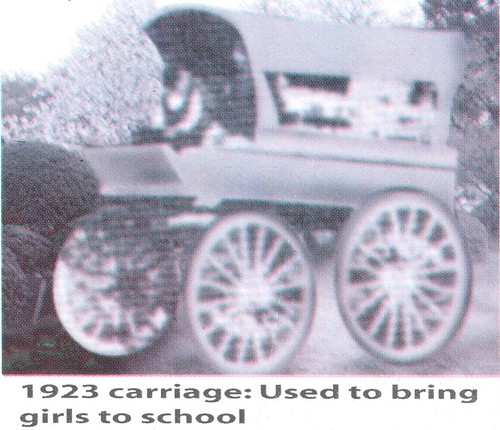
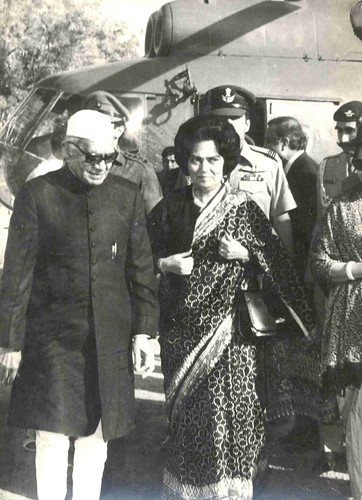
Fakhruddin Ali Ahmad and Begum Abida Ahmad Arriving at Aligarh
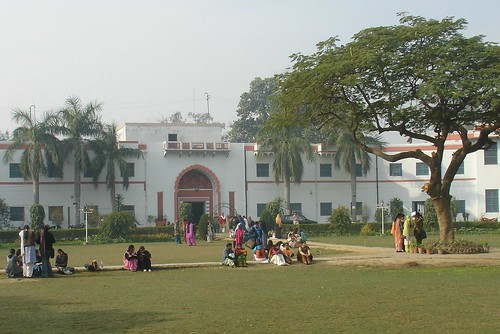
Women’s college at AMU
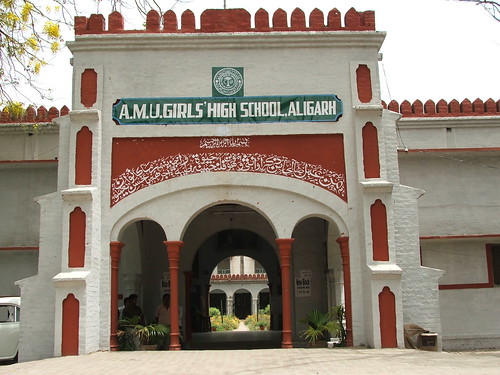
AMU Girls’ High School
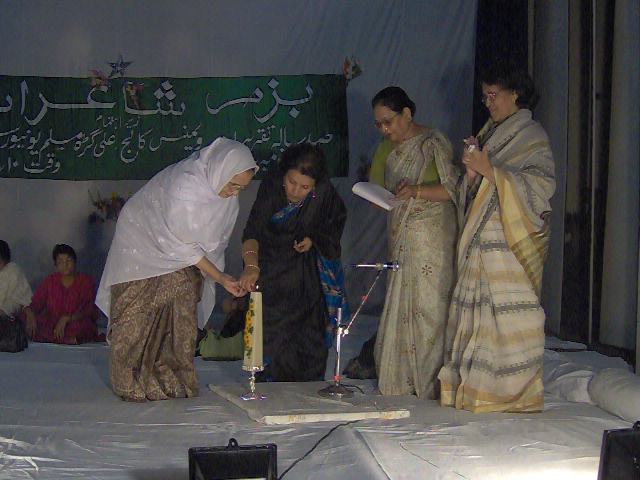
Centennial Celebration in 2006
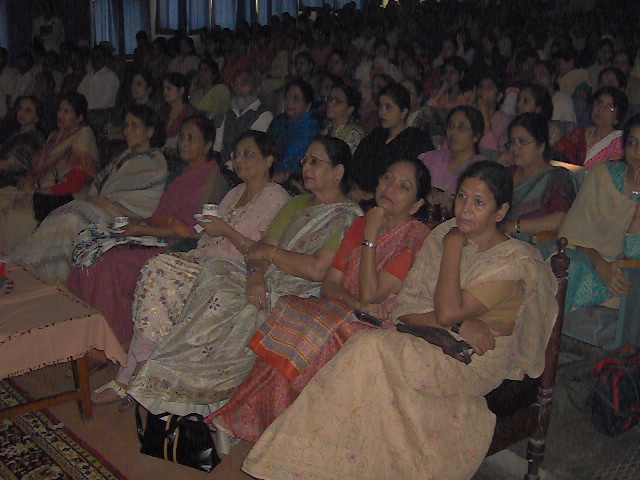
Centennial Celebration in 2006

Prof. Zakia A. Siddiqi (Left), Principal (1987-96), receiving guests of centennial celebration in Feb 2007

Kusum Ansal inaugurating the centennial issue of Women’s College Magazine “Emergence of the new Women” at the centennial celebration in Feb 2007
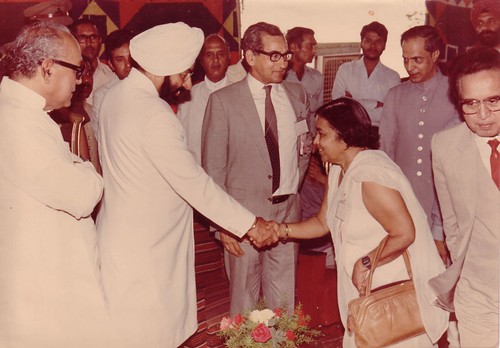
Prof. Miss A. Thomas (Principal – 1983-87) receiving H.H. Giani Zail Singh, President of India at Aligarh during his visit to attend annual convention of AMU
[Photos courtesy of Rahat Abrar]
Link:
http://www.amu.ac.in/index3.asp?sublink2id=121&sublinkid=178

